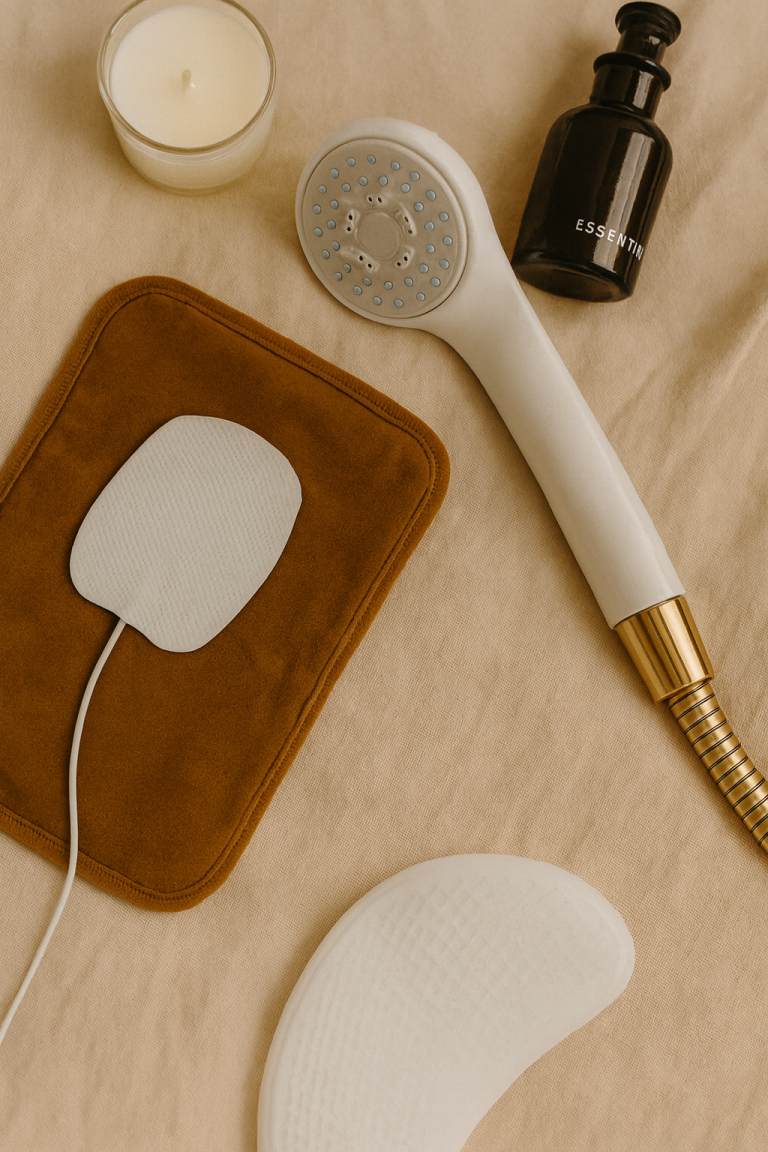
Birth Preparation
31 Jul 2025
Methods for Easing Labor Pain: Exploring Natural and Medical Options

Natural Pain Relief Methods
For many women, using natural pain relief methods during labor can provide a sense of control and empowerment. These techniques can often be used alongside medical options or on their own, depending on the situation.
- Breathing Techniques and Relaxation: Deep breathing is one of the most effective natural methods for managing pain during labor. Controlled breathing helps the body relax, reduce tension, and manage stress. A study published in *The Journal of Perinatal Education* found that women who practiced breathing techniques during labor had lower levels of pain perception and a greater sense of control. Techniques like slow, deep breaths or patterned breathing (such as the "hee-hee-hoo" method) can be taught in prenatal classes or by a birthing coach.
- Hydrotherapy (Water Birth or Showers): Many women find that warm water can provide relief from the pain of contractions. Soaking in a warm bath or using a shower during labor can help relax muscles, ease pressure on the body, and reduce discomfort. According to a review published in *Cochrane Database of Systematic Reviews*, water immersion during labor can reduce the need for pain medication and speed up the progress of labor, making it a popular choice in many birth centers and hospitals.
- Massage and Touch: The simple act of massage can significantly reduce pain perception during labor. Gentle back rubs, applying pressure to the lower back, or using a birth ball for support can help reduce pain intensity. A study published in *Birth* found that massage during labor helped women feel more comfortable, decreased anxiety, and reduced the overall experience of pain. Techniques like acupressure, where pressure is applied to certain points on the body, can also promote relaxation and pain relief.
- Positioning and Movement: The position you choose during labor can impact your comfort level and pain intensity. Standing, walking, swaying, or using a birthing ball can help open up the pelvis and alleviate pressure. A study in *The American Journal of Obstetrics and Gynecology* showed that upright positions and movement during labor resulted in shorter labor durations and less pain. It’s important to try different positions to find what feels best for you and to stay mobile during labor if possible.
Medical Pain Relief Methods
While natural methods can be effective, some women choose to use medical pain relief to help them cope with the intensity of labor. These options vary in terms of effectiveness, invasiveness, and potential side effects, so it’s essential to discuss them with your healthcare provider ahead of time.
- Epidural Anesthesia: The most common form of pain relief used during labor is epidural anesthesia. This involves inserting a catheter into the epidural space in the lower back, delivering medication that numbs the lower half of the body. According to research published in *The New England Journal of Medicine*, epidurals are highly effective at reducing labor pain, with minimal risks to the mother and baby. However, some women may experience side effects such as a drop in blood pressure, difficulty pushing during delivery, or back pain after delivery.
- Nitrous Oxide (Laughing Gas): Nitrous oxide is a mild pain-relieving gas that can help reduce anxiety and pain during labor. It’s administered through a mask and provides an immediate sense of relaxation without significantly affecting the baby. A study in *The Lancet* found that nitrous oxide was effective in managing mild to moderate pain and anxiety during labor, and it’s often preferred by women who want to avoid more invasive options.
- Opioid Pain Relief: Opioid medications such as morphine or fentanyl can be administered to reduce pain and provide a sense of euphoria. These medications are typically given via an injection or IV and can take the edge off labor pain, though they do not provide complete relief. A study in *JAMA* found that while opioids can be effective for some women, they can also cause side effects such as drowsiness, nausea, and, in rare cases, respiratory depression in the baby. Opioids are generally avoided in the later stages of labor.
- Spinal Block or Combined Spinal-Epidural (CSE): A spinal block, similar to an epidural, is a type of regional anesthesia that provides immediate and more profound pain relief. It’s often used in combination with epidurals for greater effectiveness. A study in *The Cochrane Database of Systematic Reviews* found that the combined spinal-epidural technique is particularly effective for women who require both pain relief and a faster onset of anesthesia.
Choosing the Right Pain Relief Option for You
The right method of pain relief during labor is a deeply personal choice. Some women prefer to use natural methods to feel more in control of the birthing experience, while others opt for medical interventions for greater comfort. The best approach is to keep an open mind and be prepared for changes, as labor can be unpredictable. Research published in *Birth* suggests that being flexible and informed about all available pain relief options helps women feel empowered and less anxious about the unknowns of labor.
It's also important to discuss your preferences and options with your healthcare provider well in advance of labor. Together, you can create a birth plan that includes your pain relief preferences and any contingency plans in case interventions are needed. Having a supportive birthing team, including a doula or a birth coach, can also be incredibly beneficial in navigating the pain and emotions of labor.
MOMent of me
This place grew from that moment- for every mom looking for a softer landing.
SITE BY MOMENT OF ME 2025